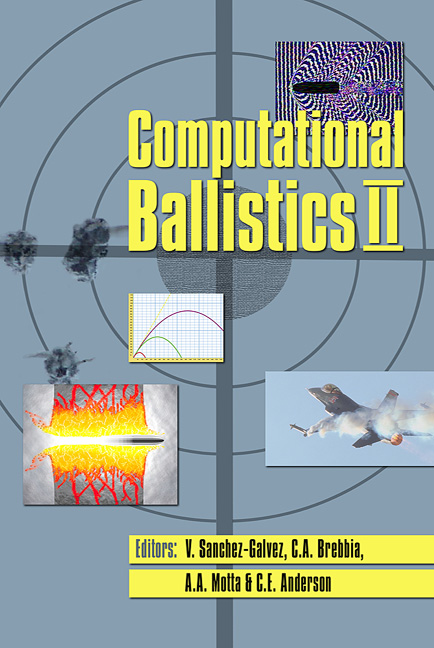Modeling The 14.5 Mm BS41 Projectile For Ballistic Impact Computations
Price
Free (open access)
Transaction
Volume
40
Pages
15
Published
2005
Size
966 kb
Paper DOI
10.2495/CBAL050071
Copyright
WIT Press
Author(s)
T. J. Holmquist, G. R. Johnson & W. A. Gooch
Abstract
This article presents the characterization and modeling of the U. S. Army Research Laboratory (ARL) 14.5 mm BS41 projectile for ballistic impact conditions. The ARL BS41 is a complex projectile that includes a steel case, inert filler materials, and an armor piercing tungsten carbide (WC) core. The characterization of the WC core is the focus of this work. The core material is a composite comprised of 93% WC and 6% cobalt (Co) and behaves like a very strong metal with little ductility. An approach is presented that determines Johnson-Cook strength and fracture model constants for the WC core using limited laboratory data along with ballistic impact experiments. Numerous 2D computations are presented (including experimental results) that demonstrate the response of the BS41 and the ability to model its behaviour. Keywords: tungsten carbide, cobalt, BS41 projectile, strength, fracture, ballistic performance, ballistic experiments. 1 Introduction and background The former Soviet, and now Russian, 14.5 mm heavy machine gun is widely proliferated worldwide, predominately on wheeled combat vehicles. The original BS41 was developed by the Soviet Union and fielded in 1941 for use in the PTRD-41 bolt-action antitank rifle. The first U. S. surrogates of the Soviet BS41 were made in 1961 with a second lot produced in 1985. The surrogates were produced by Brass Extrusion Laboratories of Bensenville, IL. These projectiles were used domestically for many decades for armor development, and for ballistic acceptance testing for steel, aluminum and titanium armor plates. The 30,000 projectiles produced, have now all been depleted in domestic testing.
Keywords
tungsten carbide, cobalt, BS41 projectile, strength, fracture, ballistic performance, ballistic experiments.




